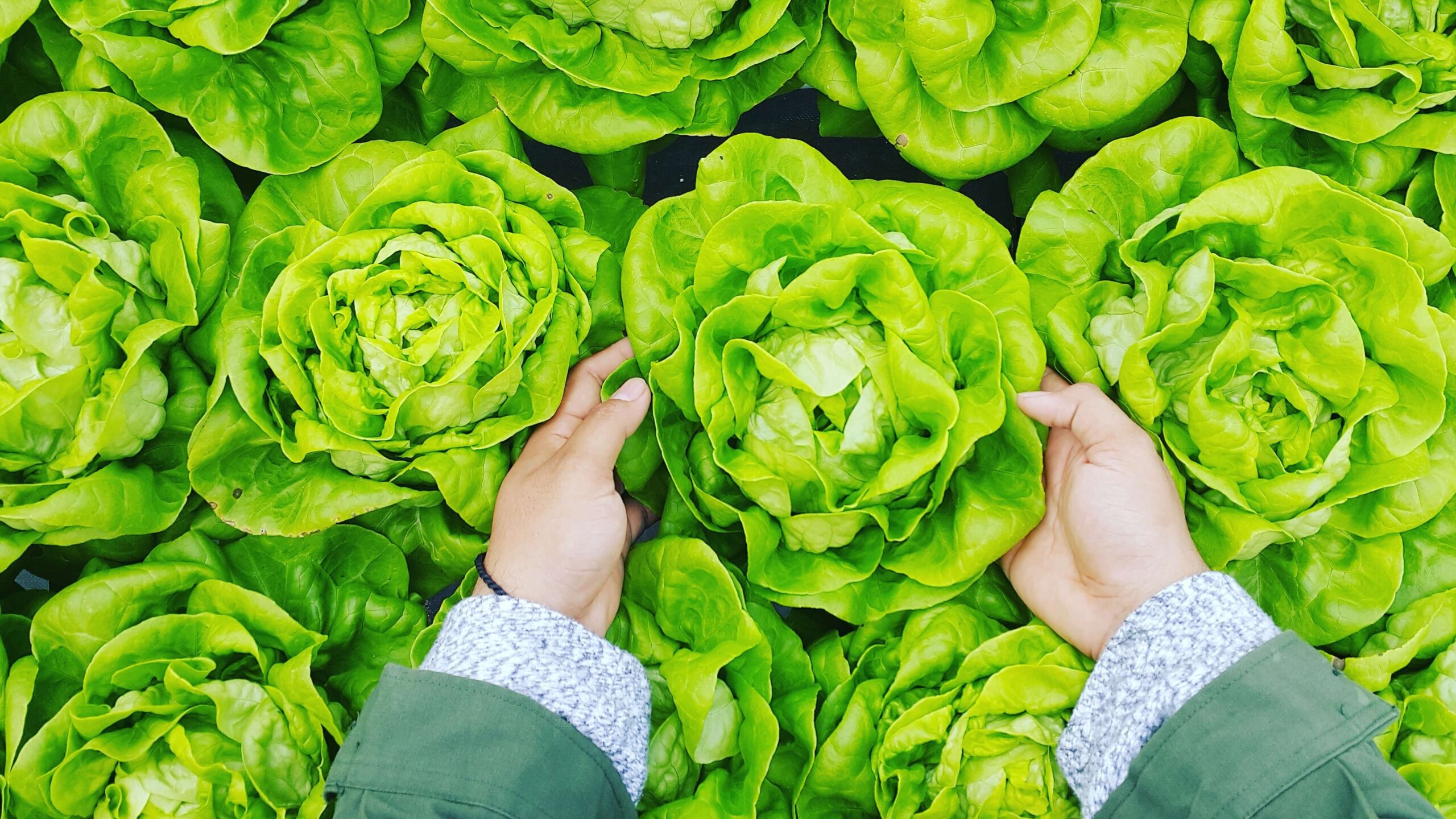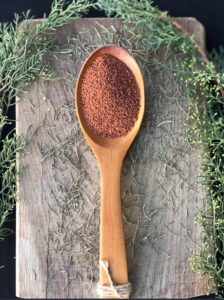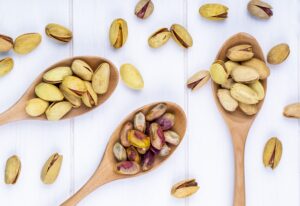Lettuce: A Leafy Green Marvel

Lettuce, scientifically known as Lactuca sativa, belongs to the daisy family and is believed to have originated from ancient Egypt. Over the centuries, it has gained immense popularity and is now cultivated and enjoyed worldwide. Its mild and refreshing flavor, combined with its versatility, has made lettuce an essential ingredient in salads, sandwiches, wraps, and a wide range of dishes.
Phytochemicals and Nutritional Value of Lettuce
Lettuce is often praised for its low calorie content and high water content, making it a great choice for those aiming to maintain a healthy weight or hydrate effectively. However, its nutritional profile extends beyond these aspects. Lettuce is a rich source of vitamins, minerals, and dietary fiber, all of which contribute to its potential health benefits.
Let’s take a closer look at the key nutrients found in lettuce.
1. Phenolic Compounds
Lettuce contains phenolic compounds, which are antioxidants that help protect the body against Oxidative Stress and inflammation. These compounds play a role in reducing the risk of chronic diseases, such as cardiovascular disease and certain types of cancer.
2. Carotenoids
Carotenoids are pigments responsible for the vibrant colors in fruits and vegetables, including lettuce. Lettuce contains various carotenoids, such as Lutein and Zeaxanthin, which are known for their role in supporting eye health and reducing the risk of age-related macular degeneration.
3. Chlorophyll
Lettuce owes its green color to chlorophyll, a pigment involved in photosynthesis. Chlorophyll has been associated with potential health benefits, including detoxification and anticancer properties.
4. Vitamins
Lettuce is a rich source of vitamins, particularly vitamins A, C, and K. These vitamins play crucial roles in maintaining overall health and well-being.
5. Minerals
Lettuce provides several minerals that are essential for various bodily functions.
6. Dietary Fiber
Lettuce is a good source of dietary fiber, which is important for maintaining a healthy digestive system, promoting regular bowel movements, and contributing to feelings of fullness. The fiber content in lettuce can aid in weight management and support overall digestive health.
Health Benefits of Lettuce
Lettuce offers an array of potential health benefits due to its nutrient content and unique properties. Incorporating this leafy green vegetable into your diet can contribute to overall well-being. Let’s delve into the various health benefits of lettuce:
1. Low in Calories and High in Fiber
Lettuce is a low-calorie food, making it an excellent choice for weight management and calorie-conscious individuals. It provides bulk and satiety due to its high fiber content, which can help control appetite, support healthy digestion, and promote feelings of fullness.
2. Rich in Vitamins and Minerals
The vitamins and minerals present in lettuce play vital roles in maintaining optimal health. The abundance of vitamins A, C, and K in lettuce supports immune function, vision health, collagen synthesis, and bone health.
3. Antioxidant Properties
Lettuce contains various antioxidants, including vitamin C, beta-carotene, and other phytochemicals. These antioxidants help combat harmful free radicals in the body, reducing oxidative stress and supporting overall cellular health.
4. Promotes Hydration
Lettuce has a high water content, which contributes to its hydrating properties. Incorporating lettuce into your meals can help maintain proper hydration, especially during hot weather or intense physical activity.
5. Supports Digestion and Gut Health
The fiber content in lettuce promotes healthy digestion and regular bowel movements, preventing constipation and supporting a healthy gut microbiome. It acts as a Prebiotic, nourishing beneficial gut bacteria and promoting overall gut health.
6. Cardio-Protective Effect
The combination of fiber, antioxidants, and phytochemicals in lettuce may have a positive impact on cardiovascular health. These components contribute to reducing the risk of heart disease by supporting healthy cholesterol levels, blood pressure, and inflammation management.
7. Anti-Cancer Effect
Lettuce contains certain compounds that have been associated with potential anti-cancer properties. The antioxidants and phytochemicals in lettuce help neutralize free radicals, protect cells from DNA damage, and inhibit the growth of cancer cells.
8. Anti-Diabetic Effect
The fiber content in lettuce aids in regulating blood sugar levels, making it beneficial for individuals with diabetes or those aiming to manage their blood glucose levels. It helps slow down the absorption of sugars and promotes better glycemic control.
9. Immunomodulatory Effect
The vitamins and antioxidants found in lettuce can contribute to a healthy immune system. Vitamin C, in particular, plays a vital role in immune function, supporting the body’s defense against infections and diseases.

10. Hepatoprotective Effect
Certain compounds in lettuce, including, polyphenolic components and the antioxidant activities of these compounds, have shown hepatoprotective properties, supporting liver health and protecting against oxidative stress. Including lettuce in your diet can contribute to the overall well-being of your liver.
11. Neuroprotective Activity
Lettuce contains certain bioactive compounds that may have neuroprotective effects. These compounds have shown potential in supporting brain health, cognitive function, and protecting against neurodegenerative diseases.
12. Anti-Inflammatory Properties
Some studies suggest that lettuce may possess anti-inflammatory properties, which can help reduce inflammation in the body. Chronic inflammation is associated with various diseases, and incorporating anti-inflammatory foods like lettuce can be beneficial.
Various Types of Lettuce and Their Unique Qualities
Lettuce comes in several different varieties, each with its own unique qualities in terms of taste, texture, and appearance. Here are some of the most common types of lettuce:
Each type of lettuce offers its own texture, flavor profile, and nutritional composition, allowing for a variety of options when incorporating lettuce into your meals. Experimenting with different lettuce varieties can add diversity and excitement to your salads and dishes.
In the next section, we will explore tips for selecting, storing, and using lettuce to ensure maximum freshness and flavor.
Tips for Selecting, Storing, and Using Lettuce
To make the most of your lettuce and ensure its freshness and flavor, here are some helpful tips for selecting, storing, and using lettuce:
By following these tips, you can enjoy lettuce at its best and incorporate it into a variety of dishes to enhance their nutritional value and overall appeal.
Takeaway
Lettuce, a popular vegetable worldwide, offers more than just low calories and high water content. It is rich in vitamins, minerals, and dietary fiber, contributing to its potential health benefits. Lettuce contains phenolic compounds, carotenoids, and chlorophyll, which have antioxidant, anti-inflammatory, and potential anticancer properties. It is a great choice for weight management, hydration, digestion, and gut health. Lettuce also supports cardiovascular health, blood sugar regulation, immune function, and liver health. Its neuroprotective and anti-inflammatory effects, along with its variety of types and culinary versatility, make lettuce a valuable addition to a healthy diet.






